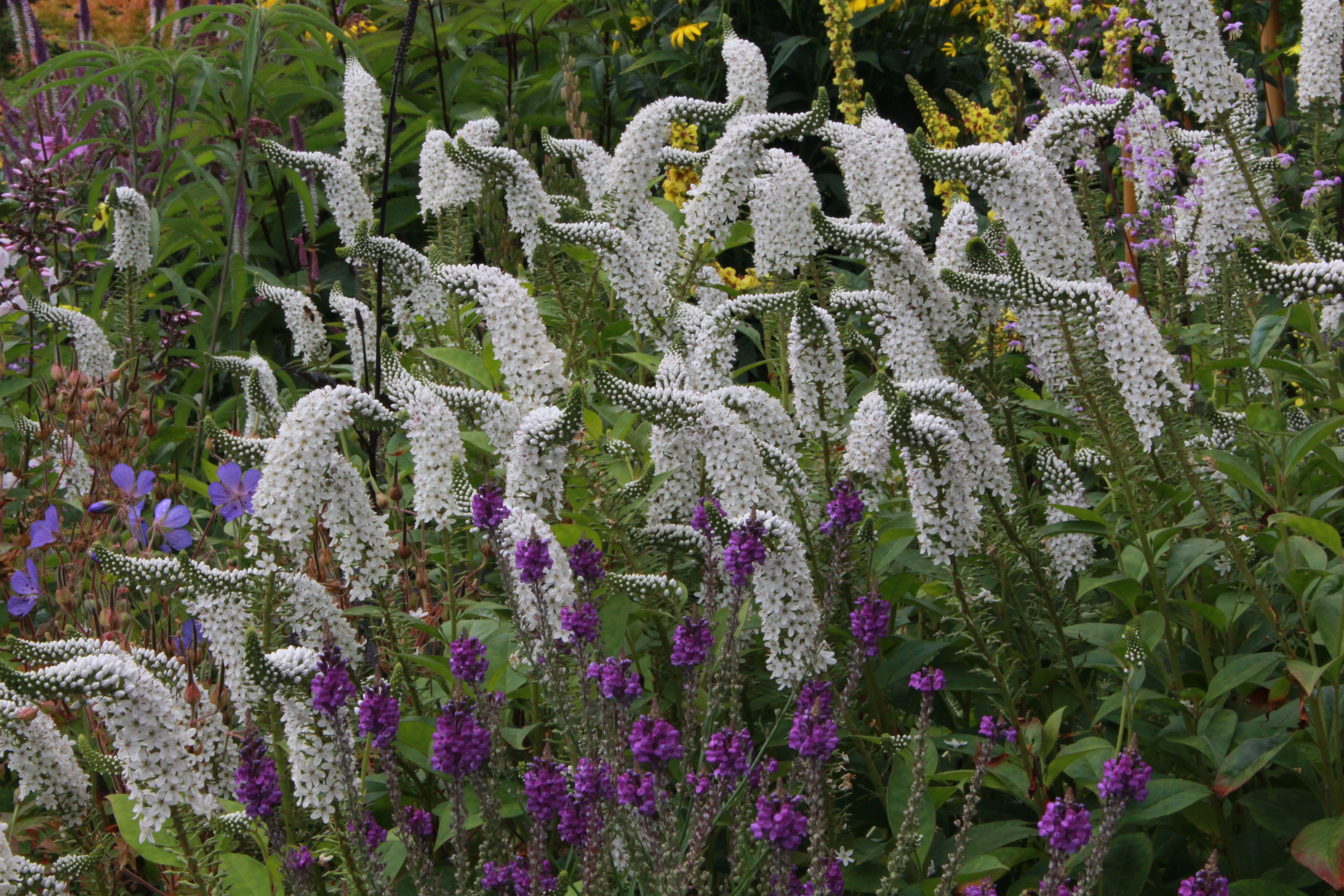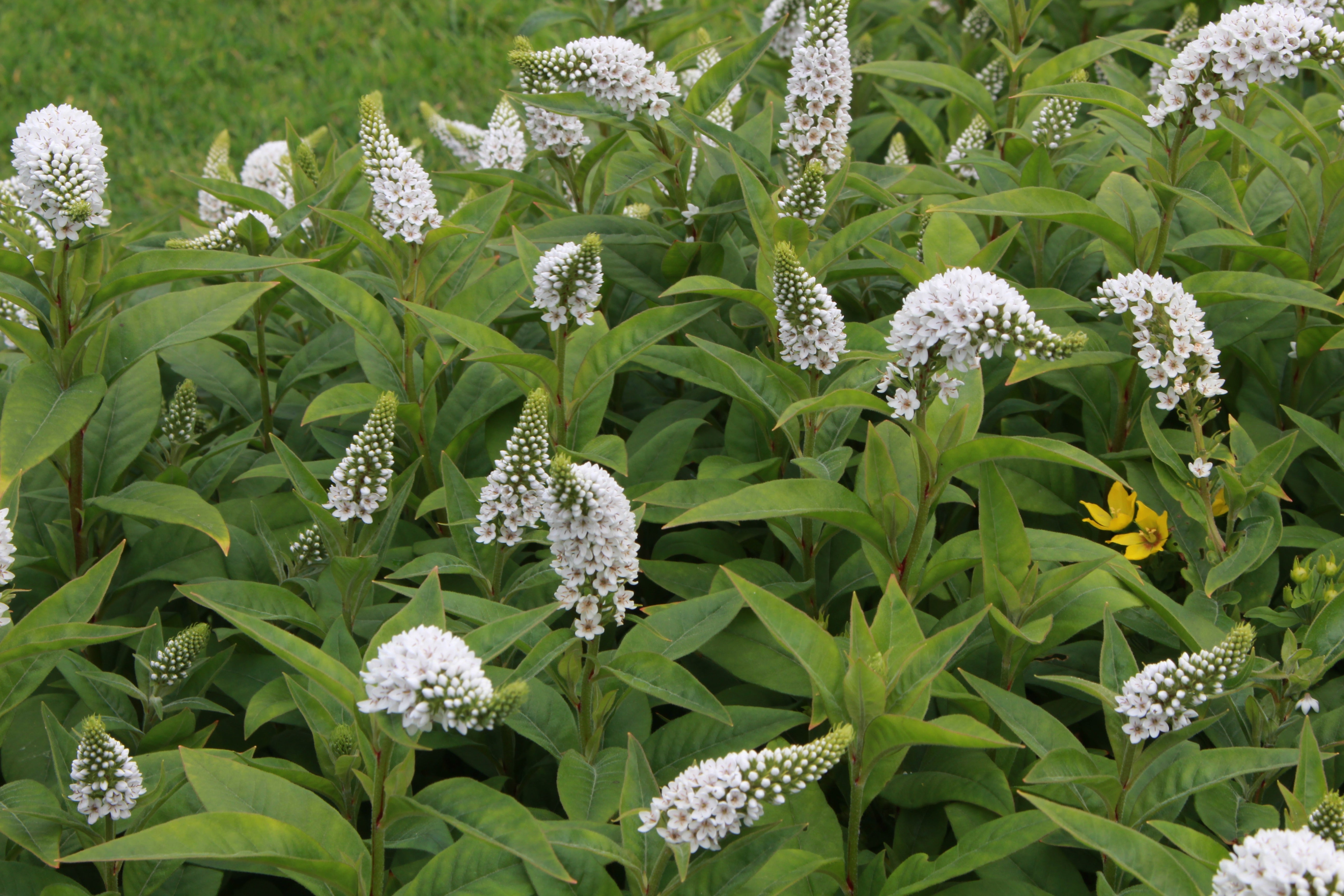Lysimachia clethroides
Approx. 0.5 litre pot
About this cultivar:
Lysimachia clethroides is a vigorous herbaceous perennial forming an extensive colony of erect stems with greyish-white flowers borne on slender, bendy, spikes in summer. Also the lance shaped leaves turn a lovely red in autumn. Its wonderful appearance has give it the common name gooseneck loosestrife. The species name is a bit more boring, it means resembling the genus Clethra (alder).
It spreads by runners and has a reputation of being a bit of a thug. However it has been with us for years and in our experience it has never been a problem. So, who knows?!?! You have been warned anyway! Maybe you want a thug for tough areas...
It looks amazing, we love it, insects love it, as do the Royal Horticultural Society who gave it their Award of Garden Merit.
I think a nice combo is with other whites, say a phlox. Or even with yellows, such as Helianthus.
- Position: Full sun, partial shade
- Soil: Almost any soil, grows well in Ballyrobert
- Flowers: June, July, August
- Other features: Royal Horticultural Society Award of Garden Merit (RHS AGM)
- Hardiness: H6 - Hardy in all of UK and northern Europe (-20 to -15°C), Fully hardy, grows well in Ballyrobert
- Habit: Clump forming
- Foliage: Deciduous
- Height: 60 - 90 cm (2 - 3 ft)
- Spread: 60 - 90 cm (2 - 3 ft)
- Time to full growth: 2 to 5 years
- Plant type: Herbaceous Perennial
- Colour: Green, white
- Goes well with: Great all rounder, aquilegia, other whites, or even yellows
About this genus:
Lysimachia has a bit of family drama. Take a deep breath.... It is a genus consisting of 193 accepted species of flowering plants traditionally classified in the Primrose family (Primulaceae). Based on a molecular phylogenetic study it was transferred to the Myrsine family (Myrsinaceae), before this family was later merged into the Primulaceae. Several species within Lysimachia are commonly called loosestrife, although this name is also used for plants within the genus Lythrum. Lythrum, of course, is in the family Lythraceae which is called the loostrife family. Confused? Don’t worry, it seems the botanists are too.
The genus name relates to King Lysimachus (661-281 B.C.), Macedonian King of Thrace who is said to have calmed a mad ox by feeding it a member of the genus. Indeed the ancient Greeks called it Lysimacheios, so the name hasn’t changed much since the ox was fed. Though I advice you calm yourself not by eating Lysimachia but by planting in your garden. Interestingly, Lysimachia derives from the Greek 'lys(i)' meaning 'loose, a loosening, release from' and 'mach(i)' meaning 'a fight, strife'. So I presume the common name is derived from the botanical latin?!?!
Several fossil seeds of Lysimachia species have been described from middle Miocene period, which is estimated to be between 23 to 5 million years ago. Maybe they had it in ancient gardens. In modern times Lysimachia species often have yellow or white flowers, and often grow vigorously. Natively, they tend to grow in damp conditions. Though, with such an old genus with such a large amount of species there is obviously some variation.
With the ones we’re talking about they’ll grow almost anywhere that isn’t a cave or a swamp or a desert, so don’t worry too much. We most likely won’t be selling many thuggish, invasive types but we might! So do read the descriptions! We like them anywhere really since they tend to be so reliable, but we’re not sure a pot is the right place. Get them in the ground as soon as you can. They are often known as shade plants since they are so reliable, but they also look great in sun. Great all rounders!






